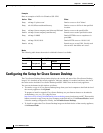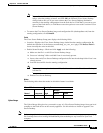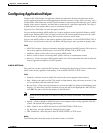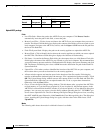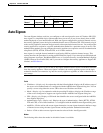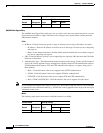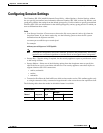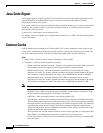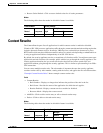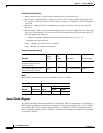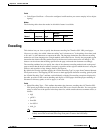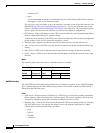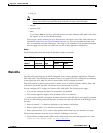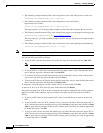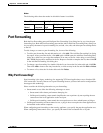
38-12
Cisco ASDM User Guide
OL-16647-01
Chapter 38 Clientless SSL VPN
Java Code Signer
Java Code Signer
Code signing appends a digital signature to the executable code itself. This digital signature provides
enough information to authenticate the signer as well as to ensure that the code has not been
subsequently modified since signed.
Code-signer certificates are special certificates whose associated private keys are used to create digital
signatures. The certificates used to sign code are obtained from a CA, with the signed code itself
revealing the certificate origin.
To select a Java Code Signer, use the drop down list.
To configure a Java Code Signer, go to Configuration > Remote Access VPN > Certificate Management
> Java Code Signer.
Content Cache
Caching enhances the performance of Clientless SSL VPN. It stores frequently reused objects in the
system cache, which reduces the need to perform repeated rewriting and compressing of content. The
use of the cache reduces traffic, with the result that many applications run more efficiently.
Fields
• Enable cache—Check to enable caching. The default value is disable.
• Parameters—Lets you define the terms for caching.
–
Enable caching of compressed content—Check to cache compressed content. When you disable
this parameter, the security appliance stores objects before it compresses them.
–
Maximum Object Size—Enter the maximum size in KB of a document that the security
appliance can cache. The security appliance measures the original content length of the object,
not rewritten or compressed content. The range is 0 to 10,000 KB; the default is 1000 KB
–
Minimum Object Size—Enter the minimum size in KB of a document that the security
appliance can cache. The security appliance measures the original content length of the object,
not rewritten or compressed content. The range is 0 to 10,000 KB; the default is 0 KB.
Note The Maximum Object Size must be greater than the Minimum Object Size.
–
Expiration Time—Enter an integer between 0 and 900 to set the number of minutes to cache
objects without revalidating them. The default is one minute.
–
LM Factor—Enter an integer between 1 and 100; the default is 20.
The LM factor sets the policy for caching objects which have only the last-modified timestamp.
This revalidates objects that have no server-set change values. The security appliance estimates
the length of time since the object has changed, also called the expiration time. The estimated
expiration time equals the time elapsed since the last change multiplied by the LM factor.
Setting the LM factor to 0 forces immediate revalidation, while setting it to 100 results in the
longest allowable time until revalidation.
The expiration time sets the amount of time to for the security appliance to cache objects that
have neither a last-modified time stamp nor an explicit server-set expiry time.
–
Cache static content—Click to cache all content that is not subject to rewrite, for example, PDF
files and images.



